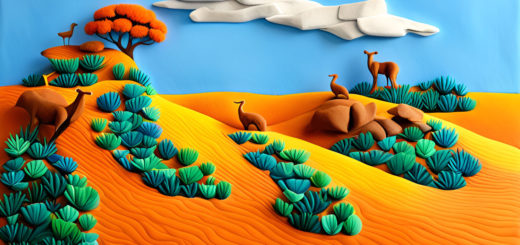Preserving Australia’s Unique Ecosystems: The Importance of Biodiversity Conservation

When you hear the word “biodiversity”, you might be wondering, “What’s that?” Simply put, biodiversity refers to the amazing variety of life forms on our planet, from the smallest microorganisms to the largest whales. It’s the range of different plants, animals, and microorganisms, and the ecosystems they form. You could think of it as the immense jigsaw puzzle that is life on Earth.
Australia’s a bloke who has been gifted with an impressive piece of this puzzle. We’re blessed with some of the richest biodiversity in the world. From our unique marsupials like kangaroos and koalas to our stunning coral reefs and diverse bird life, Australia’s biodiversity is a national treasure.
However, as we’re all aware, human activities have left their mark on this treasure. Over time, our actions, such as urban development, agriculture, and mining, have significantly impacted our native flora and fauna, threatening their survival. The importance of biodiversity conservation in Australia cannot be overstated, and it’s high time we gave it the attention it deserves.
Threats to Australia’s Unique Ecosystems
As we delve deeper into the threats faced by our unique ecosystems, it’s crucial to understand that it’s not just the critters and the greenery at stake. It’s about preserving our way of life and ensuring a sustainable future for generations to come. Threats to Australia’s ecosystems are diverse and substantial, and they’re largely driven by us, mates.
Climate change, that big elephant in the room, is having a profound effect on our biodiversity. Rising temperatures and shifting rainfall patterns are disrupting the delicate balance of our ecosystems, causing stress and endangering many species.
Habitat loss and fragmentation are also significant threats. As we continue to clear land for urban development and agriculture, we’re encroaching upon the natural habitats of our wildlife. This not only leads to loss of species but also disrupts the connections between them, putting entire ecosystems at risk. It’s a bit like trying to complete that jigsaw puzzle with a bunch of missing pieces. You can learn more about habitat preservation in Australia to understand the importance of maintaining these natural connections.
Conservation Efforts in Australia
It’s not all doom and gloom, though, mates! Despite these threats, we’re not standing by idly. There are concerted conservation efforts in Australia aimed at preserving our rich biodiversity.
National parks and protected areas serve as sanctuaries for our native species, offering them a refuge from human activities. There’s also a myriad of conservation programs and initiatives, from government-led strategies to non-profit conservation efforts, all dedicated to safeguarding our natural heritage.
But what’s heartening is the rise in community involvement in these efforts. From planting trees to monitoring wildlife populations and engaging in ecosystem restoration, ordinary Aussies are playing a significant part in preserving our biodiversity. It’s a real community-led revolution, and it’s brilliant to see.
Case Studies: Successful Biodiversity Conservation Efforts in Australia
Now, you might be thinking, “Sure, all this sounds great in theory, but does it actually work?” Well, there are plenty of success stories to tell, mates. Let’s take a gander at some examples of how our conservation efforts have turned the tide for some of our precious native species and ecosystems.
First up is the recovery of the Eastern Barred Bandicoot. Once widespread across Victoria, this little marsupial was almost wiped out due to habitat loss and predation by introduced foxes. But thanks to a successful breeding and reintroduction program, their numbers have increased, and they are now bouncing back in protected areas. It’s a classic Aussie battler story!
The conservation of the Great Barrier Reef, one of the world’s most iconic natural wonders, is another shining example. Despite the threats of climate change and water pollution, efforts such as regulating tourism, controlling water quality, and monitoring coral health have contributed to the reef’s resilience. While challenges remain, these actions are helping to preserve this underwater paradise for future generations.
The Economic Value of Biodiversity Conservation in Australia
Aside from the environmental aspect, there’s also a dollar sign attached to biodiversity conservation. Yep, you heard that right! Biodiversity isn’t just about birds and bees; it’s also about bucks. The economic benefits of biodiversity conservation in Australia are substantial and multi-faceted.
For starters, think about the direct economic value our natural assets provide through industries like tourism and agriculture. Our unique wildlife and pristine natural landscapes draw millions of visitors each year, contributing billions to our economy. And let’s not forget the value of our ecosystems in providing essential services like pollination, soil formation, and carbon sequestration. If we had to pay for these services, we’d be shelling out a pretty penny, mates!
On the flip side, there’s a significant cost associated with inaction on biodiversity conservation. The loss of species and ecosystems can have devastating effects on our economy. So, protecting our biodiversity is not just a moral responsibility; it’s an economic one, too.
The Role of Individuals in Biodiversity Conservation
While governments and organisations play a crucial role in biodiversity conservation, don’t think for a moment that you, as an individual, can’t make a difference. On the contrary, every one of us has a part to play in this important mission.
There are many simple actions we can take to promote biodiversity conservation. These range from reducing our carbon footprint and recycling to planting native trees and creating backyard habitats for wildlife. And of course, we can always lend a hand in local conservation initiatives, whether it’s participating in a beach clean-up or joining a citizen science project. These grassroots actions can have a significant impact when multiplied across our population.
Education and awareness-raising are other crucial areas where individuals can make a difference. By learning about the importance of biodiversity and the threats it faces, we can make more informed decisions about how we interact with our environment. Spreading the word about conservation can inspire others to take action, too. Remember, every conversation counts!
The role of citizen science in biodiversity conservation also deserves a mention. Citizen science involves ordinary people—non-scientists like you and me—in scientific research. Whether it’s observing wildlife, monitoring water quality, or tracking changes in weather patterns, citizen scientists can provide valuable data that contribute to conservation efforts. It’s a way of getting hands-on with conservation, and it’s a fantastic learning experience, too.
Conclusion
So, there you have it, mates. Biodiversity conservation in Australia is more than just a buzzword—it’s a vital part of our national identity and our future sustainability. Our unique wildlife and ecosystems are under threat, but through concerted efforts and individual action, we can turn the tide.
Whether it’s by supporting biodiversity conservation in Australia, taking part in a local conservation initiative, or simply making eco-friendly choices in our daily lives, each of us has a role to play. And remember, every little bit helps. So, let’s roll up our sleeves and get to work. Our biodiversity is worth fighting for.

